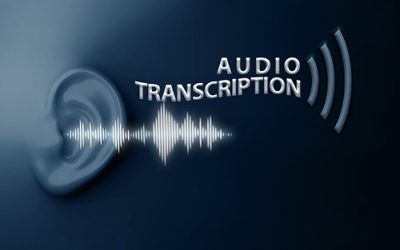As remote hearings increase during the new normal, efficient electronic document management is critical for the legal industry. Lawyers deal with volumes of information and the challenge is to manage legal documents efficiently and securely. With a legal transcription service, lawyers can ensure that audio recordings of briefs, correspondence, court proceedings, depositions, and other legal events are accurately transcribed while saving substantial amounts of time on documentation. However, along with preparing persuasive arguments, success with remote hearings depends on presenting excellent electronic documents.
The key data and document management concerns that lawyers face, according to enterprise software developer Aimprosoft, are:
- Searching for keywords within the file binder
- Difficulty in retrieving documents
- Inability to annotate and amend case files
- Unknown status of a particular case
- No alerts and notifications
- Synchronization with originals and version control
- Voluminous paper files to carry on the move
- Slow determination of caseloads
- Lack of reporting tools for pleadings
Automating records management can simplify processes to meet the legal retention requirements and reduce the time that legal professionals spend on administration. This will give them to spend more time on productive tasks and boost efficiency. Here are some the advantages of legal document automation:
-
- Accessibility: Law firms have massive amounts of sensitive files and these should be easily and quickly accessible. Storing these files on a computer would allow them to be organized into folders and shared. However, efficient storage means that each file must be easy to track and available instantly. Document management allows for storage of information as well as meaningful and useful tools that help lawyers organize, categorize, annotate, search, retrieve, and share documents. With features like index and search, OCR, document tagging and profiling, email management, folders for organizing documents/email, version management, efficient software will ensure that legal documents are intelligently organized, accessible and safe.
Implementing mail room automation will ensure that mail is sorted, classifies and distributed. This is a great way to save time in managing and processing legal documents. With automation, all in-bound communications would be routed to the right recipient. This will speed up the process of responding to incoming queries, lower waiting times and thereby improve client satisfaction. Likewise, implementing intelligent software can also determine the best method for outbound communications such as print, email, fax or web-portal, reducing costs while improving the customer experience (www.lawyer-monthly.com).
- Accessibility: Law firms have massive amounts of sensitive files and these should be easily and quickly accessible. Storing these files on a computer would allow them to be organized into folders and shared. However, efficient storage means that each file must be easy to track and available instantly. Document management allows for storage of information as well as meaningful and useful tools that help lawyers organize, categorize, annotate, search, retrieve, and share documents. With features like index and search, OCR, document tagging and profiling, email management, folders for organizing documents/email, version management, efficient software will ensure that legal documents are intelligently organized, accessible and safe.
-
- Formatting: Lack of internal efficiency is a major concern for law firms (www.accusoft.com). A key challenge is managing the large number of documents and images that are continually created. Many legal documents are sent via email and in various file formats such as PDF, .JPG, .TIFF, or raster. Legal documents such as pleadings, briefs, affidavits, etc., will be accepted as valid only if they are in top condition. Each type of document has different formatting rules and needs to be properly cleaned and edited for use in court. The best solution would be to make use of apps that can identify text, extract specific fields with search commands, and improve scanned image clarity.
- Compliance: Electronic file management should maintain compliance with industry standards and regulations and meet security requirements of sensitive data protection. With an on-premise or cloud document management system, access controls and audit trails can be put in place to ensure such compliance and make systems more accurate and accountable.
While automating document management is critical, lawyers also need to pay attention to delivering “exceptional” electronic documents to win their first virtual appeal, notes an article published by www.thelawyersdaily.ca/. Author Jacob R.W. Damstra offers the following tips to make electronic filings for remote hearings user-friendly and easily navigable:
- File all e-documents filed in PDF OCR searchable format with navigable tables of contents/indexes.
- Provide hyperlinks for case references in facta to cases available online and/or cross-linking to an electronic book of authorities.
- Cross-link references in facta to the motion record, appeal book, legal transcription, or respondent’s compendium.
- E-books of authorities annotated to include a navigable table of contents with links directly to the paragraph references you intend to take the court or tribunal.
- Submit e-documents together in a single e-mail in a zip file, a secure file sharing service or compiled on a USB.
- If possible, co-ordinate and co-operate with opposing counsel to enable cross-referencing between plaintiff/defendant, appellant/respondent, moving party/responding party materials.
Creating and managing documents is one of the most vital and expensive administrative tasks in both large and small law firms. Outsourcing digital transcription to an experienced service provider is the best way to convert dictated files into quality digital documents. An established legal transcription company can ensure timely and accurate solutions that save time and money and free up lawyers for more important tasks.




